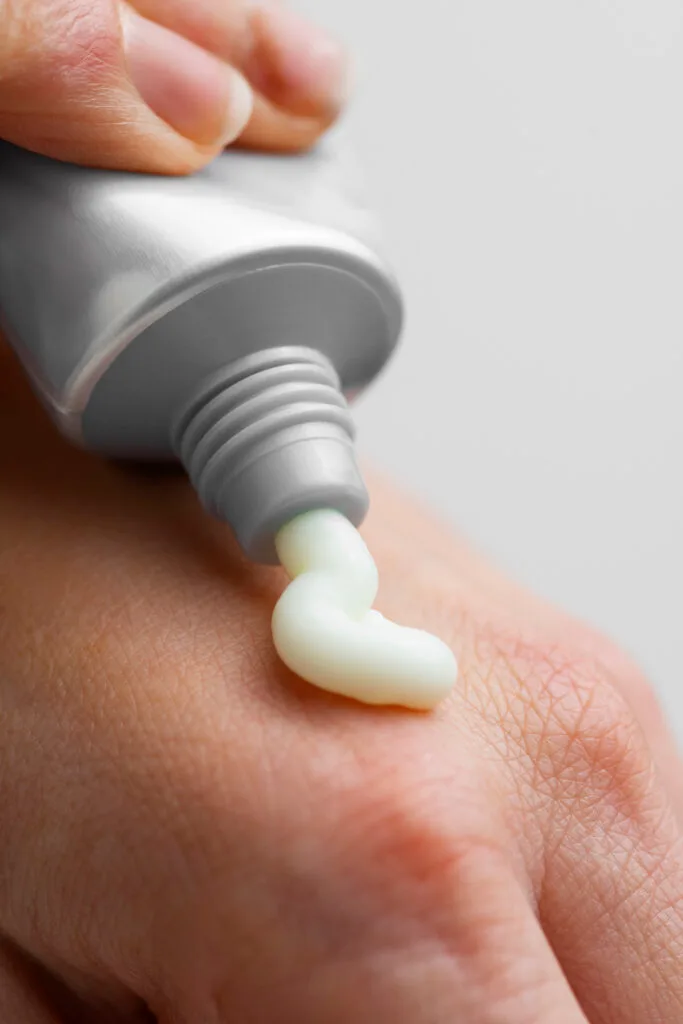Benzoyl peroxide — if you’ve ever dealt with acne, chances are you’ve seen this name pop up on products at least a dozen times. But what’s the real deal behind this ingredient? Is it as powerful and skin-transforming as people say? Let’s dive deep and clear up everything — from myths to real-life results — about benzoyl peroxide.

What Is Benzoyl Peroxide?
Introduction to Benzoyl Peroxide
It is a common topical antibacterial used extensively for acne treatment.You’ll find it in over-the-counter products like gels, face washes, creams, and spot treatments. It works fast, it’s budget-friendly, and it’s been trusted for decades.
How It Works on the Skin
Benzoyl peroxide tackles acne in two ways:
- It kills Propionibacterium acnes — the bacteria behind breakouts.
- It helps exfoliate the skin’s surface, unclogging pores filled with oil and dead skin cells.
Benefits of Benzoyl Peroxide
Fights Acne-Causing Bacteria
The number one reason it is so effective? It obliterates acne bacteria on contact. Unlike antibiotics, bacteria don’t develop resistance to it. That’s a huge win.
Unclogs Pores and Reduces Oil
It’s not just about the bacteria. It also keeps your pores clear by removing the gunk — oil, dirt, and dead skin — that loves to throw a pimple party.
Quick Results for Mild to Moderate Acne
With regular use, many see improvement within 4-6 weeks. For mild to moderate acne, it can work like a charm.
Types and Strengths of Benzoyl Peroxide
Available Forms (Gel, Cream, Cleanser)
You’ll find this in various formats:
- Gels: Lightweight, fast-absorbing, great for oily skin.
- Creams: Hydrating and ideal for drier skin.
- Cleansers: Perfect for full-face coverage without leaving residue.
Understanding Concentrations (2.5%, 5%, 10%)
More isn’t always better. A 2.5% concentration is often just as effective as 10%, with fewer side effects.
Which Strength Is Right for You?
- 5% – Best for sensitive or dry skin.
- 5% – Balanced option for most skin types.
- 10% – For stubborn acne, but may irritate.
How to Use Benzoyl Peroxide Safely
Step-by-Step Application Routine
- Wash your face with a gentle cleanser.
- Pat dry and wait 5–10 minutes.
- Apply a pea-sized amount of benzoyl peroxide.
- Follow with a non-comedogenic moisturizer.
Start once daily, then increase if your skin tolerates it.
Combining With Other Skincare Ingredients
Ingredients to Avoid With Benzoyl Peroxide
- Retinol: Can cause extreme dryness or peeling.
- Vitamin C: May reduce effectiveness.
- Alcohol-based toners: Too harsh when used together.
Best Moisturizers to Use Alongside
Look for those with ceramides, niacinamide, or hyaluronic acid.
Side Effects of Benzoyl Peroxide
Common Reactions (Dryness, Peeling)
Expect some dryness, redness, or mild peeling — especially in the first few weeks.
When to Stop Using It
Stop if you experience:
- Burning
- Swelling
- Blistering
Talk to a dermatologist if irritation persists.
How to Minimize Side Effects
- Use gentle cleansers.
- Always moisturize.
- Don’t overuse — more is not better.
Benzoyl Peroxide Myths and Facts
Myth: It Causes Permanent Skin Damage
Truth: When used correctly, it’s safe and effective. Irritation isn’t permanent.
Myth: Higher Strength Means Better Results
Truth: Not necessarily. 2.5% can be just as effective with fewer side effects.
Myth: Natural Remedies Are Safer
Truth: Don’t assume “natural” products are always safer or more effective; benzoyl peroxide, for example, is supported by extensive research.
Who Should Use Benzoyl Peroxide?
Teens and Adults With Acne
It works for all ages. Whether you’re 16 or 36, it can help tame breakouts.
Not Suitable for Sensitive Skin?
It can be used cautiously. Begin with a low concentration and mix with moisturizer.
Benzoyl Peroxide vs Other Acne Treatments
Salicylic Acid
Effectively addresses clogged pores and blackheads, commonly used with benzoyl peroxide.
Retinoids
Stimulate cell turnover — powerful but more likely to irritate.
Prescription Options
For severe acne, your doctor might recommend antibiotics or isotretinoin. But for many, benzoyl peroxide is enough.
Tips for Best Results With Benzoyl Peroxide
Patch Testing First
Always test on a small patch before full application to avoid unexpected reactions.
Consistency Over Speed
It’s not magic — give it time. Consistency wins over aggressive application.
Daily Sunscreen Is a Must
It can increase sun sensitivity. Wear SPF 30+ every day.
Lifestyle and Diet Tips to Support Benzoyl Peroxide
Eating Clean for Clearer Skin
Reduce sugar, dairy, and greasy foods. Add more leafy greens, fruits, and water.
Stress Management and Sleep
High cortisol from stress = breakouts. Try meditation, exercise, and 7-8 hours of sleep.
Conclusion
Benzoyl peroxide is a trusted, time-tested solution for beating breakouts. Whether you’re new to acne treatment or revisiting it after trying other options, this powerhouse ingredient offers a solid, scientifically backed approach to clearing your skin. Start slow, pair it with a soothing skincare routine, and stay consistent — your skin will thank you.
FAQs
Yes, once your skin adjusts. Start slow and increase frequency if there's no irritation.
Mostly yes. Those with sensitive or eczema-prone skin should use lower strengths cautiously.
Typically 4–6 weeks with consistent use.
Yes! Always use white towels and let the product fully dry before dressing.
No. It helps prevent future breakouts. Use it 2–3 times a week for maintenance.